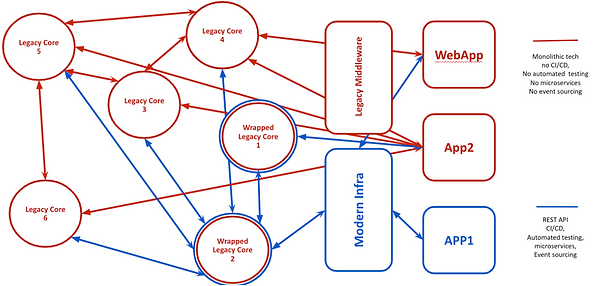top of page

Mapfre
Mapfre is the largest insurance company in Spain, with $23bn in annual gross written premium, $65bn balance sheet, and the only insurance company listed in the Spanish IBEX35 stock market exchange. It employs 30.000 employees world wide, 10.000 in Spain and has an engineering department of +1.500 people.
Mapfre - Residence
We have been helping Mapfre and its leadership team to think about their product and strategy. Mapfre uses our external view on how small early stage companies build consumer software to come up with small structure iterations that can accelerate the digital transformation of the company. This case study focuses on the process we followed.
Product culture
Mapfre has been a leader ever since inception. It sells multiple insurance products to its more than 7M customers in Spain, and operates in Europe, USA and Latam.
“Move fast and break things” culture doesn’t go well with these figures. Breaking something can have terrible consequences in an environment like this. These companies feel comfortable moving in environments of high certainty, and that's why they have a project oriented development culture, where ROI is predictable, teams are ephemeral, deadlines are strict and output oriented.
Product and technology teams at Mapfre are dragged by this corporate culture, so our first exercise was to find a sweet spot within this culture to create autonomous, outcome oriented product squads with a high presence of engineering talent.
"Structure eats culture for lunch." - Safi Bahchal
Technological legacy
While evaluating the structure across product teams, we also evaluated the technology stack of Mapfre at a high level to find the development bottlenecks. A massive organization comes with great talent, and we found plenty of teams working with modern technology and infrastructure. Aligning the technology strategy with the product roadmap and structure allowed us to pinpoint the next key hires to achieve the transformation OKRs.
Combining the first outcomes of the audit, we were able to define autonomous product squads that can parallelize the most important bets to make in order to achieve OKRs. Next, we had to find out what features could make a difference.
North star metric
The short term goals of the digitalisation process implied increasing the use of Mapfre’s digital products. This immediately implied that the north star metric used by the team did not properly measure success, so we worked with their internal auditing team to define a new metric that can capture the structural cost reduction of digitalization, in the same way that marketing uses CAC to evaluate the performance of their spending.
Feature Audit
Inspired by Intercom’s feature audit exercise (read more), and with a clear goal in hand, we did an adaptation and conducted a deep analysis with Mapfre’s data teams and operations teams to answer a simple question: How are our customers accessing our services? We split volumes across operations, mobile app and office network.
This exercise essentially removed the noise in the prioritization process, and allowed us to focus on 3 key areas within the company.
Operational playbook
Throughout our feature audit research, feature 8 and 9 pointed us at a clear prioritization playbook adapted to Mapfre which had a precedent, serving as a previous success product leaders can point at to increase the execution certainty of their initiatives.
RICE
We now had a cookbook to launch new features inside the company, and 3 focus areas were to look for opportunities. We were operating with partial information, so we had to come up with a batch of features that would give us high certainty of hitting our OKRs.
RICE is a popular prioritization methodology (more here) that takes objective metrics and subjective metrics to very quickly come up with a ranked list of features to tackle a problem. This methodology also allowed us to open a new, healthy discussion with non-product stakeholders in the company in order to capture new insights, validate the roadmap and help everyone understand the tradeoffs necessary to be made and get them on board with the plan.
RICE gave us clear candidates to hit our goals, we now had to put them to work.
OKRs
We usually see two versions of the use of OKRs:
-
A team starts using them and struggles to make them past their area of influence. Great approach to manage a team, but it will struggle to fit in.
-
They are defined at the ExCo or SteerCo level, and stay there. This is great, but goals will need granularity.
Managing multiple squads at the same time requires well greased processes, so clear OKR’s per squad and team member are fundamental to solve for cross team conflicting goals, as well as helping individual contributors understand where they fit in the big picture.
This takes us to the final structure and roadmap that makes parallelize the development of the best opportunities to achieve the company OKRs:
-
A product oriented structure
-
Taking into account the technological legacy and the roadmap to fix it
-
Working in modern product squads with the right team members
-
Focusing on the key areas of impact
-
With a set of clear bets to tackle the problems





bottom of page

